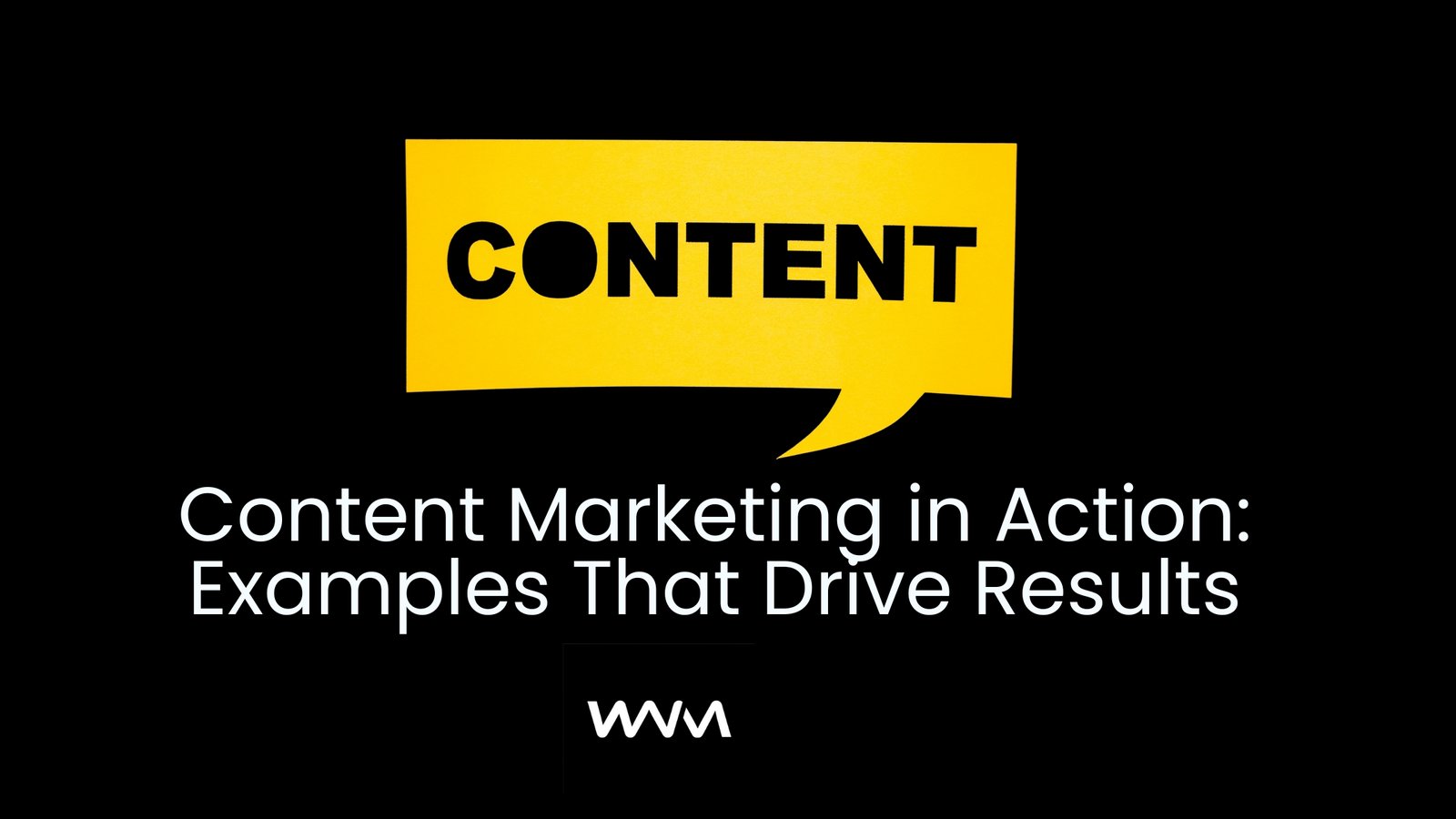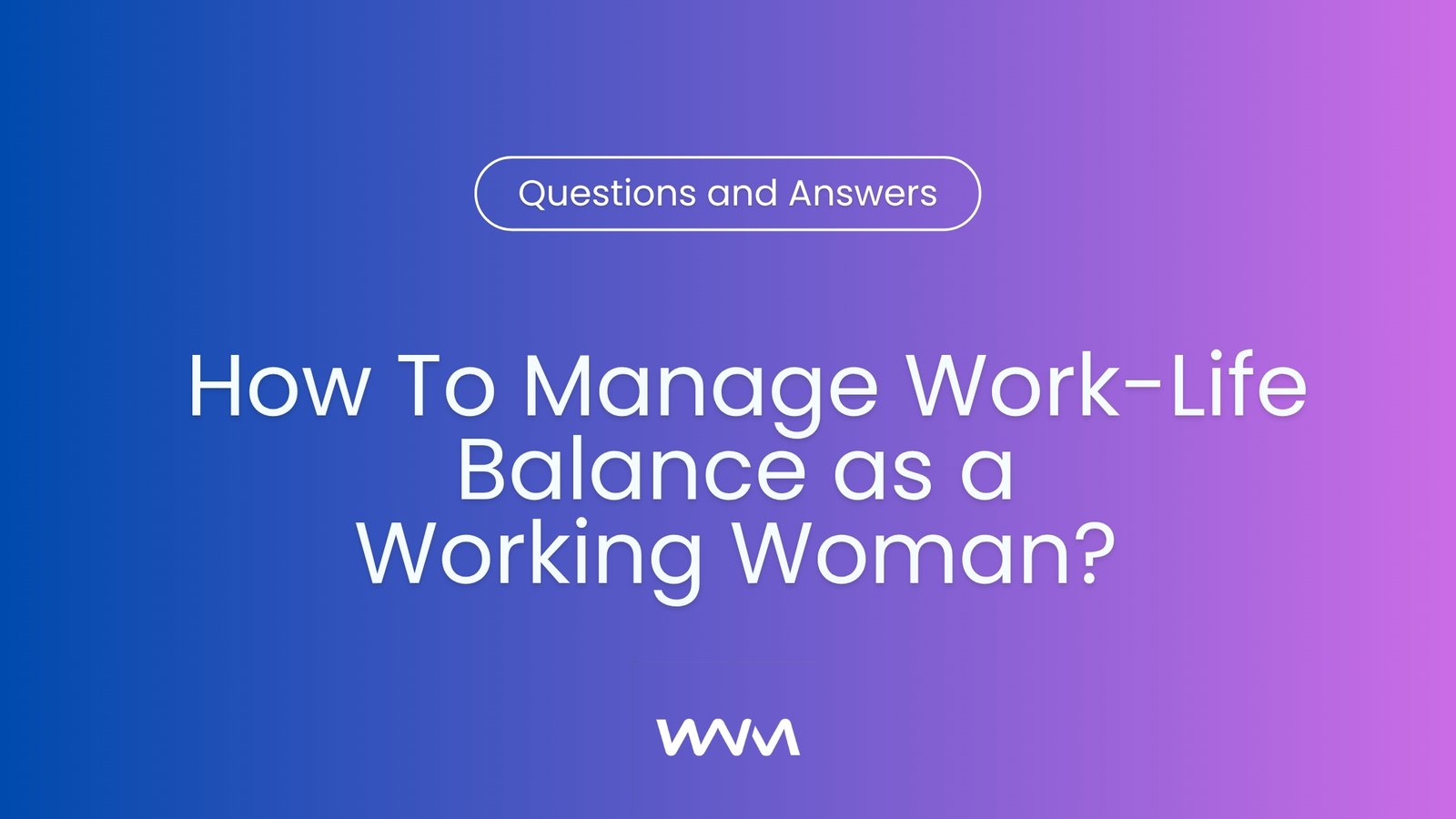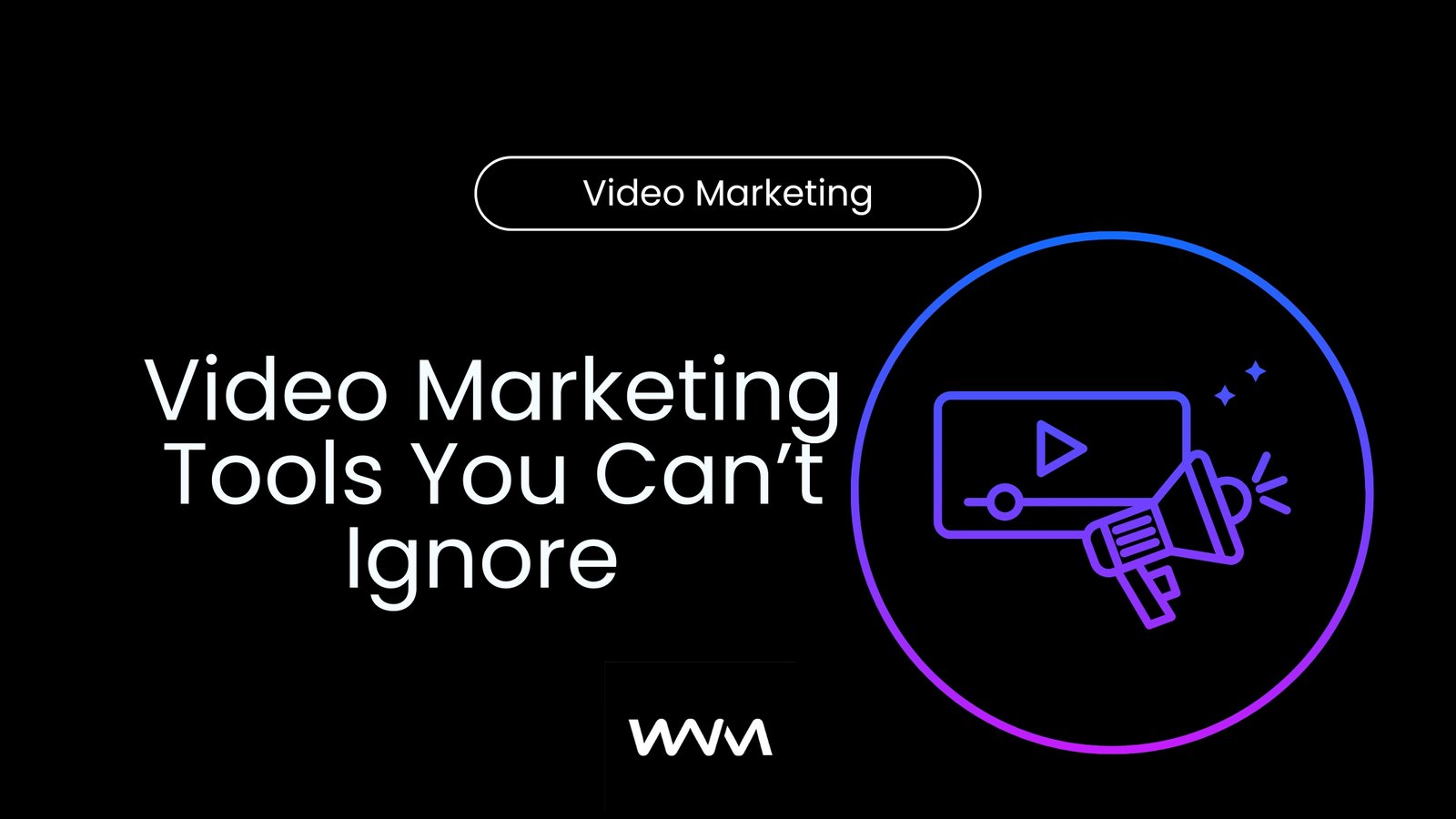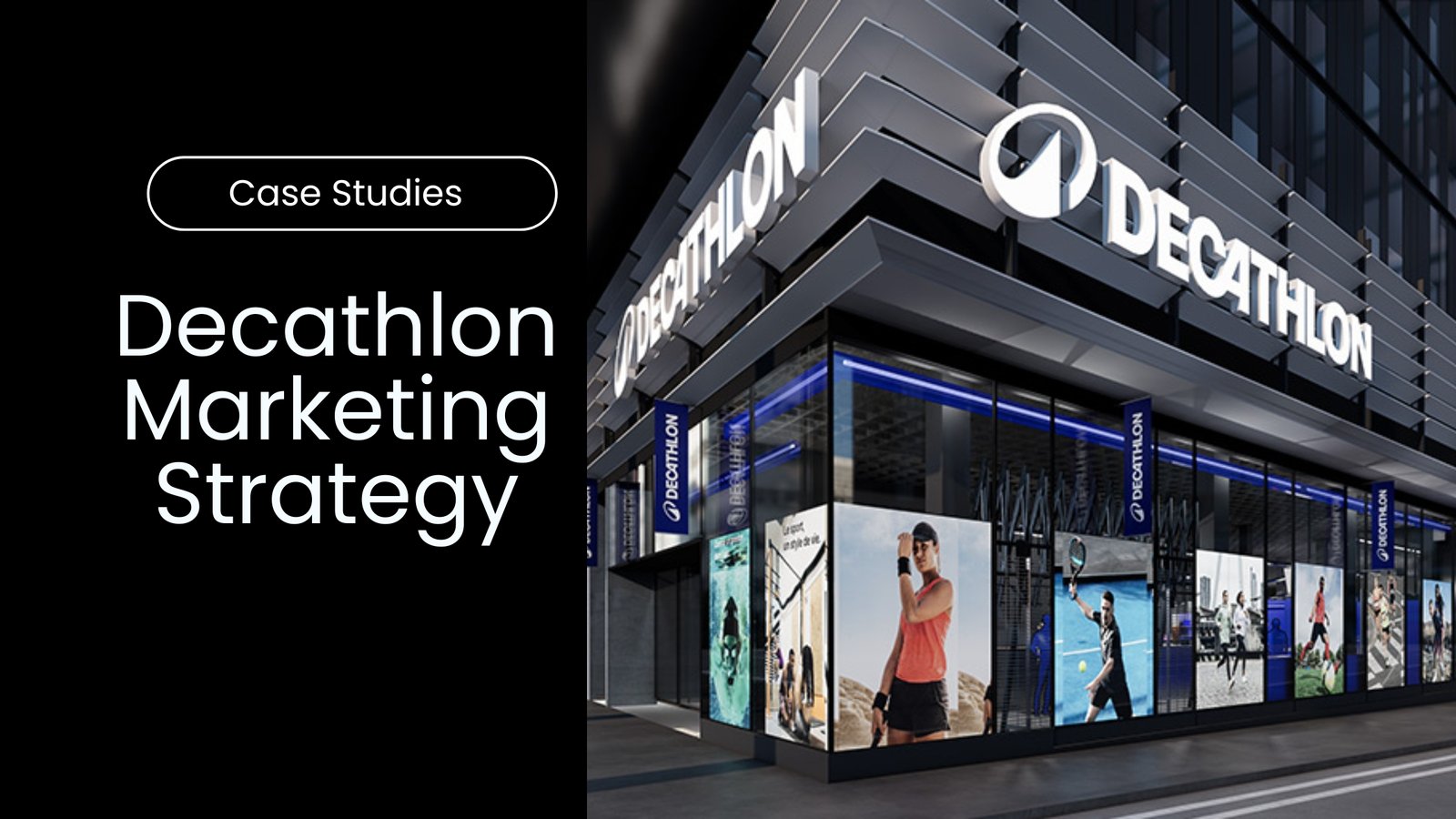Adidas Marketing Strategy – Secrets, Strengths and Ads of Adidas
Adidas is a well-known brand that resonates with sports enthusiasts and fitness freaks of all ages. The company initially focused on footwear production. Eventually, Adidas diversified its offerings to a broad collection of sportswear, sporting goods, and accessories.
One of its expansions came in 1963 when Adidas started producing soccer footballs. Subsequently, Adidas has been the official provider of footballs for the annual FIFA World Cup™ since 1970.
The tagline of Adidas is “Impossible is Nothing,” and the company has successfully demonstrated this motto for itself. Adidas’ market capitalization stands at $31.46 billion as of March 2023.
This Adidas marketing and branding strategy case study explores the brand’s successful marketing campaigns that made the brand to sustain for 73 years and forever.
What is Adidas’ Target Market?
Adidas caters to a highly active target market that includes athletes and non-athletes with a passion for sports. The brand’s audience typically ranges from 14 to 40 years of age, with clothing and footwear lines also available for infants and children.
Adidas Marketing and Branding Strategy Framework
The Adidas marketing and branding strategy framework is inspiring and innovative. The 4Ps – Product, Price, Place, and Promotion – are integral components of this framework. It guides the company in making critical business decisions.
Let’s dive deep into these four strategies that shape Adidas Marketing and Branding Strategy:
Product
Adidas produces diverse sports gear and apparel, however its reputation is primarily built on its athletic footwear. At the writing of this blog, the brand is the second largest sports shoe manufacturer globally and was valued at US$14.3 billion in the latest 2021 statistics. In 2021, Adidas amassed over US$11.6 billion in revenue, with a considerable share attributed to footwear sales.
Below are a few of the most iconic Adidas shoes ever created:
Adidas Superstar: Launched in 1969, the Adidas Superstar transformed the basketball scene with its outstanding grip, impact resistance, and robustness, establishing itself as the ultimate performance shoe. These shoes are also fashionable casual sneakers for both men and women.
Adidas Stan Smith: For countless tennis players worldwide, the Adidas Stan Smith is a must-have shoe, thanks to its minimalist design that blends well with the game and functional comfort.
Adidas collaborates with a multitude of researchers, creators, designers, and open-source innovations to produce high-quality products in a scalable manner.
Overall, Adidas has a comprehensive product lineup. It offers top-of-the-line options in various categories. For apparel, Adidas provides an extensive range of sweatshirts, shorts, tracksuits, jackets, swimwear, sports bras, hoodies, and more.
In addition, Adidas offers sports accessories, such as bags, sunglasses, goggles, and watches. Furthermore, Adidas has expanded into the fragrance and skincare industry and sports equipment, such as footballs.
How to launch your personal branding?
Pricing
Although Adidas prices its products at a premium, the company considers its primary competitors, such as Puma, Nike, and other emerging startups, when determining its prices.
Additionally, Adidas implements a skimming pricing strategy, where newly released products are initially offered at premium prices, with their value gradually decreasing as they lose popularity.
Promotion
Adidas heavily invests in traditional ads like billboards, TV, magazines, and social media. The brand partners with celebrities like Beyonce, Lionel Messi, Pharrell Williams and Stella McCartney to target wide audiences. Adidas is also known for sponsoring national football teams like Germany, Mexico, Spain, and Argentina.
Place
Adidas operates production facilities in approximately 55 countries, with 800 factories across different continents. Its products’ primary mode of distribution is through retail stores, namely Adidas outlets, which number over 2,800 globally.
Another essential distribution channel for Adidas products is through multi-brand showrooms, where distributors supply the products to be displayed alongside other brands.
Suggested: Does LinkedIn Marketing Really Work?
Digital Marketing Strategy and Campaigns
This Adidas Marketing Strategy Case Study showcases the brand’s emphasis on utilizing digital channels to maximize customer engagement and offer tailored experiences. In fact, as part of its primary growth strategy, “Own the Game,” until 2025, Adidas plans to invest over €1 billion in digitalization.
Let’s delve deeper into Adidas’ digital marketing strategy:
Customer Relationship
Adidas engages with its customers in an exemplary manner. The company provides personalized experiences that foster enthusiasm and excitement for sports on an individual level. The brand leverages every touchpoint, such as mobile, social media, and retail through industry-leading CRM softwares.
It helps them to interact with consumers and provides them with inspiring and customized experiences.
Engine Digital collaborated with the Adidas Digital Future Team to meet the needs of Run Genie’s audience.
The agency was tasked with defining an end-to-end customer experience that enables the sales team to guide the purchase decision through data visualization and connected hardware.

Compelling Social Media Campaigns
Social media plays a critical role in the success of Adidas brand. The brand possesses unique tone and approach that positions it uniquely in the social media.
Championing Sustainability
The company has made a public commitment to sustainability and promoting positive changes in the sportswear industry through innovation and action, as part ofAdidas branding strategy.
In a January 2020 press release, the company acknowledged its role in contributing to the issue of plastic waste and declared it a significant problem. Consequently, Adidas initiated a vast social media campaign centered around the message “End Plastic Waste” as an essential aspect of Adidas branding strategy.
On its Instagram page, Adidas prominently features the hashtag #endplasticwaste. It is among the top 10 most frequently used hashtags and ranks 9th in average engagement.
Adidas produced a documentary series on its YouTube channel highlighting its efforts and contributions toward ending plastic waste.
Adidas’ dedication to sustainable practices was incorporated into its recent strategic business plan, “Creating the New.” This plan prioritizes speed, recognizing it as a vital factor in a rapidly changing world.
The brand introduced an innovative 3D printing technique that prioritizes speed without compromising quality and waste reduction to fulfill this objective.
Adidas’ collaboration with Parley for the Oceans is an exceptional instance of such an innovative partnership. It is the production of three new UltraBoost models from recycled ocean plastic waste. This further emphasizes sustainability in Adidas marketing and branding strategy case study.
Suggested: Video marketing tools
Advocate for Social Cause
Demonstrating community involvement is one of the most effective ways to build trust and establish authority with your audience. Inclusivity, diversity, and visibility promote the human side of your brand. It fosters emotional connections with your followers.
Therefore, Adidas launched another impactful social media campaign centered around the Black Lives Matter movement.
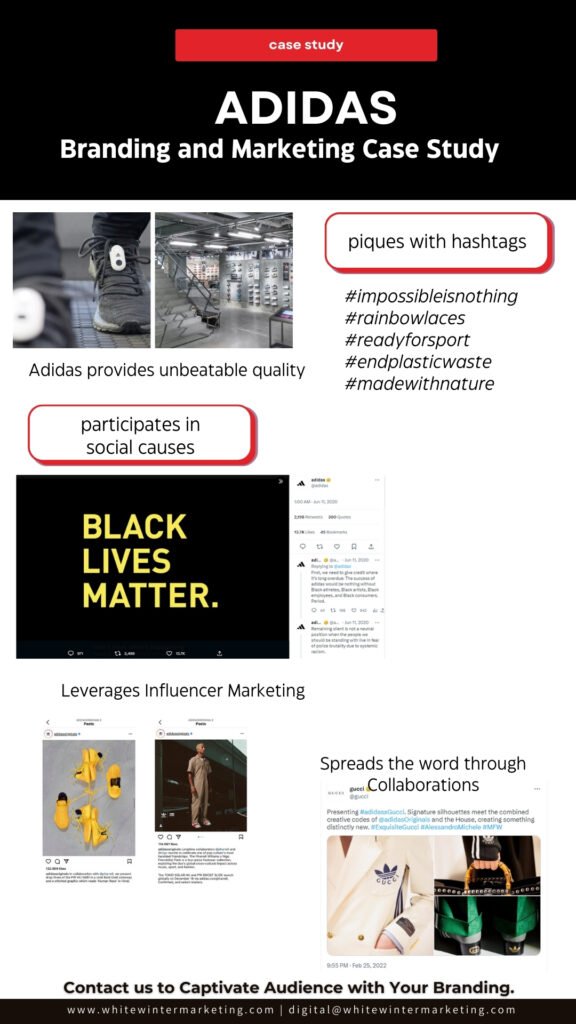
After the passing of George Floyd, Adidas declared through a series of tweets that “it is time to own up to our silence.”
Historically, Adidas’ target audience has been predominantly male.
However, the company has recently increased its marketing efforts toward the female demographic. An instance of this is the award-winning “Liquid Billboard” campaign. It aimed at empowering women to feel self-assured while swimming in public.
Collaborations With Influencers
As per Influencer Marketing Hub, the influencer marketing sector expanded by around $16.4 billion in 2022.
Adidas places significant emphasis on fashion and style. This makes it a superior choice for influencer marketing. The company is skilled at generating buzz around its high-profile collaborations.
Adidas has strategically collaborated with athletes, models, singers, and designers. It helped them to create product releases that generated significant excitement.
The Yeezy collection is a result of one of the brand’s most notable collaborations, partnering with Kanye West. Adidas has implemented a well-planned social media strategy that capitalizes on the rapper’s vast fan base.
However, Adidas terminated its partnership with Kanye West after the artist shared anti-Semitic tweets.
Adidas collaborated successfully with Pharrell Williams, a renowned rapper, and producer, resulting in a new line of sneakers.
Pharrell’s 12.8 million Instagram followers expose Adidas to a vast potential customer base. This Adidas Marketing Strategy Case Studyhighlights the brand’s effective collaborations with celebrities, influencers, and renowned brands to widen its appeal. These partnerships position Adidas as both a fashion innovator and a sports powerhouse.
The Gucci x Adidas collaboration harmonizes the distinctive design elements of these iconic brands in an exclusive and highly coveted sports-fashion collection.
Related:
Apple Marketing and Branding Case Study
HubSpot Marketing and Branding Case Study
Strategic Cities Selection
Adidas considers six influential cities – London, Los Angeles, New York, Paris, Shanghai, and Tokyo – that significantly influence consumers’ perceptions, trends, and purchasing choices as having strategic importance in its marketing strategy.
The company invests more in promoting its products in these locations. However, the company tailors the advertising campaigns for each country to align with the local culture and market demands. For instance, in Europe, they emphasize the sale of football-related products. While in the US, other subsidiaries, such as basketball and baseball, are crucial.
Some Top Marketing Campaigns of Adidas
The Adidas Branding Strategy focuses on creating a strong and consistent image across various product categories. It emphasizes quality, performance, and innovation.
Impossible is Nothing
The company’s tagline, “Impossible is Nothing,” reflects the mindset of athletes and non-athletes alike. It encourages them to push past their limits and strive for success.
Take the Deal, Dare to Create
Introduced in 2019, this campaign seeks to expand the limits of creativity and encourage individuals to express themselves boldly through their style and forge their paths.
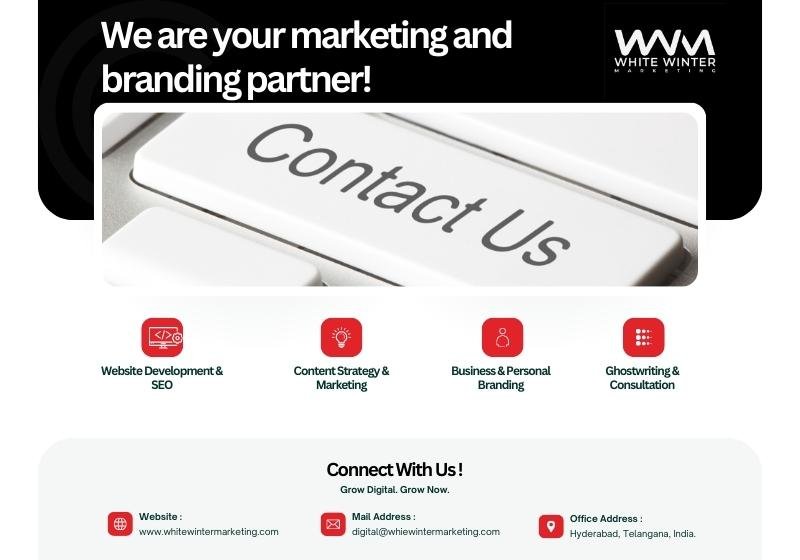
Key Takeaways From Adidas Marketing Strategy Case Study
Adidas marketing and branding strategy has led to impressive sales figures. The company stands out with its user and benefit-focused positioning. It crafts a distinct and compelling product image for consumers. The brand’s unique selling point lies in its ability to create lightweight, comfortable sports apparel unmatched by competitors.
This has earned Adidas high trust and brand loyalty from its customers, resulting in significant brand expansion.
At WhiteWinterMarketing, we help position our customers on social media. Connect with us at digital@whitewintermarketing.com to discuss your branding requirements with us.
About WhiteWinter Marketing

